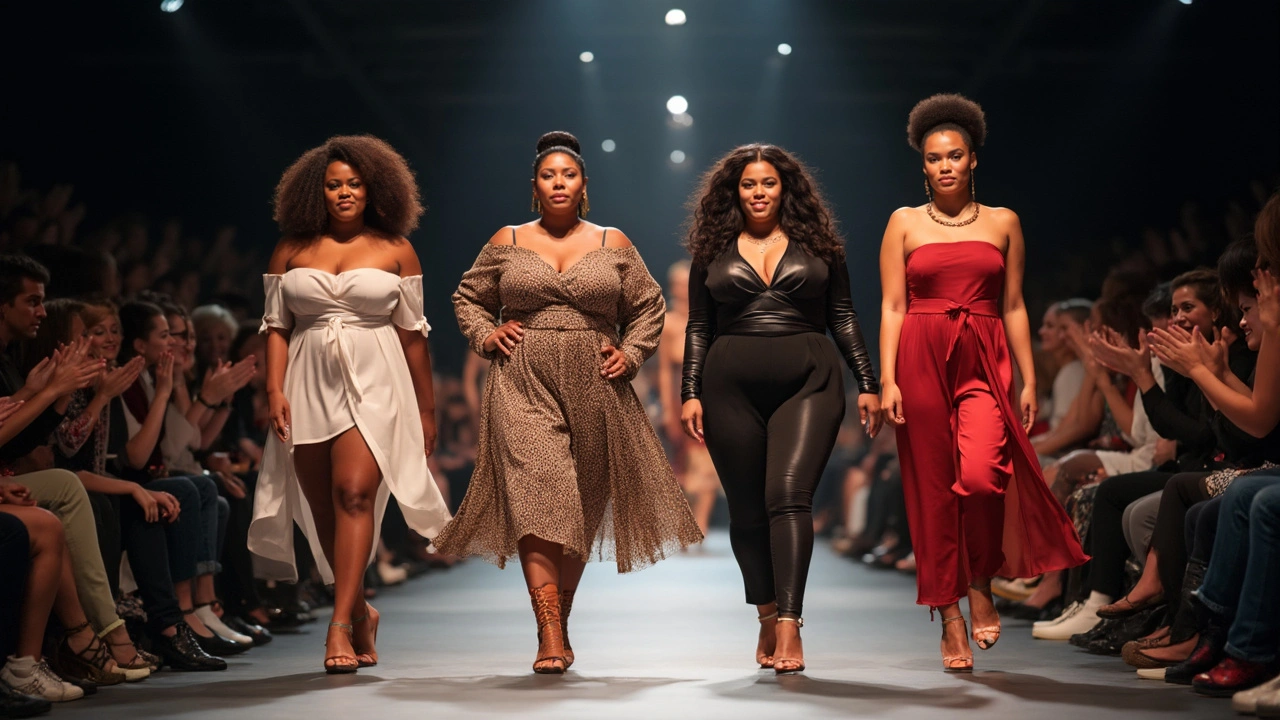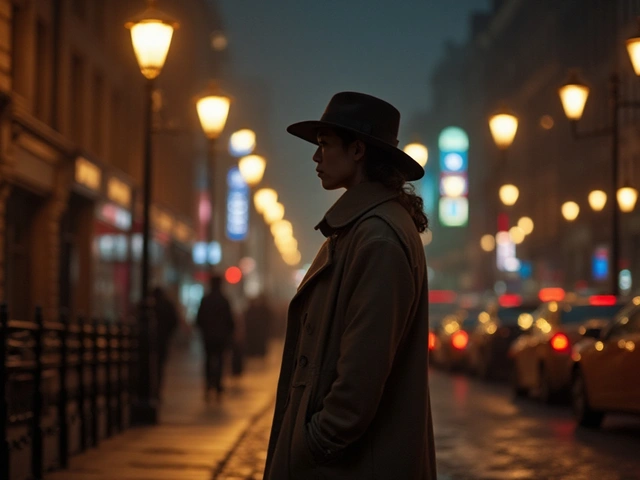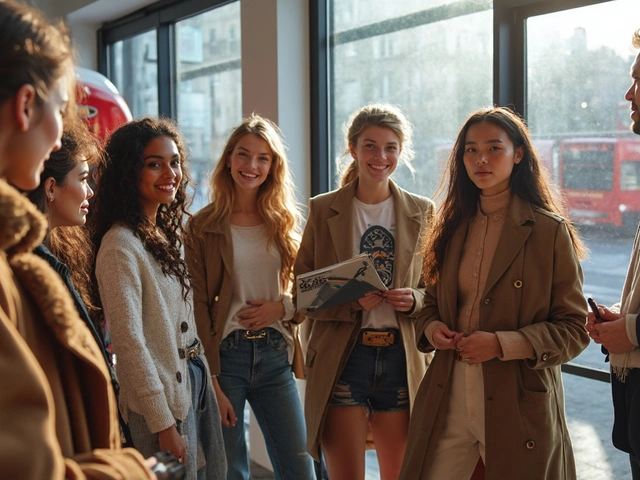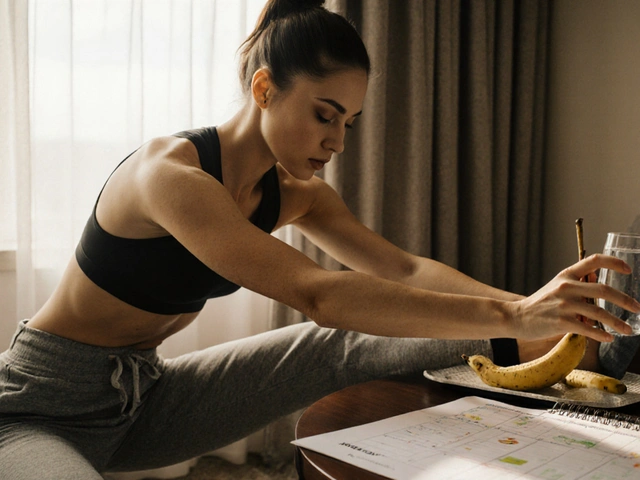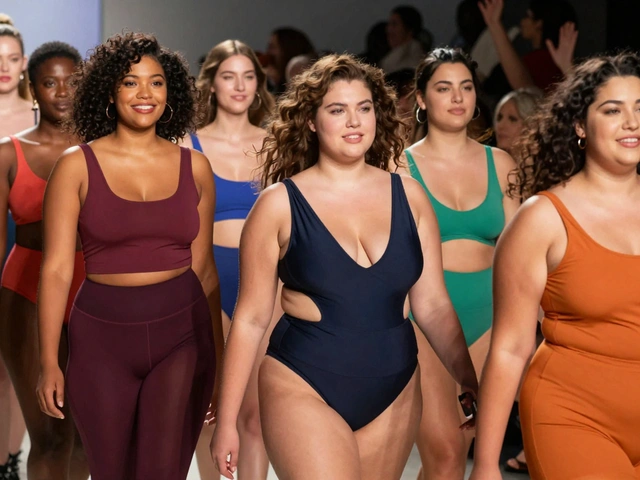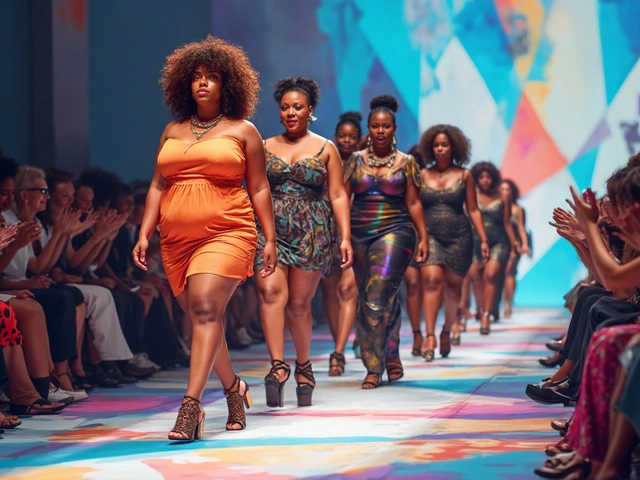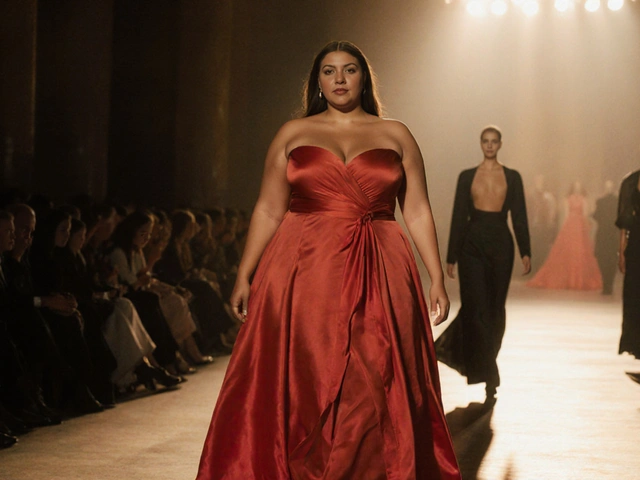Ever scroll through social media or flip through a magazine and think, "Wait, where are people who look like me?" You're not alone. That's what kicked off this whole shift toward plus size models getting seen and celebrated. The fashion world used to be a tough place for anyone over a certain size—and let's be honest, that "certain size" was pretty tiny—so a lot of us just shrugged and figured, "Guess I don't belong on the runway."
But things are changing fast. Brands know that people want to see real bodies, not just the same old cookie-cutter look. From streetwear to high fashion, plus size models are landing gigs, posing in national ads, and opening doors for the next wave of talent. And if you're thinking about jumping in yourself, there are more resources and opportunities than ever before.
Want to be part of the movement? It's not just about looks or a number on the scale—it's about confidence and showing up just as you are. Whether you're here to cheer it on, see what's possible, or give modeling a try, this is your field guide to the new era of representation. Stick around—we’re getting real about what it takes, where to look, and why plus size models matter right now.
- Key Takeaways: Why Plus Size Models Matter
- What Exactly Is Plus Size Modeling?
- How Plus Size Models Are Changing the Industry
- Getting Started as a Plus Size Model
- Common Questions About Plus Size Modeling
Key Takeaways: Why Plus Size Models Matter
Want the short version? Plus size models are more than just faces in a campaign. They open up space for millions who never saw themselves in ads or on catwalks. Seeing body types that look like yours is a game-changer—it breaks down unhealthy stereotypes and boosts confidence in people of all shapes and sizes.
The demand for body positivity and model diversity has forced big brands to ditch narrow standards and think about real people. For example, in 2023, almost 30% of fashion brands in the U.S. included plus size talent in at least one major campaign. That’s a massive shift from even five years earlier, when barely 10% did.
Plus size models also help businesses. They tap into a huge market that’s hungry for size-inclusive fashion. When shoppers see clothes on bodies similar to their own, they're far more likely to trust the fit and actually buy the product. This isn't wishful thinking—retailers report higher sales and customer loyalty when their ads are more inclusive.
| Year | Brands Using Plus Size Models (%) |
|---|---|
| 2018 | 10 |
| 2020 | 18 |
| 2023 | 29 |
Bigger picture, plus size models say loud and clear that all bodies are worthy of being seen. This shift doesn’t just help individuals love themselves a bit more—it’s changing how we talk about health, beauty, and confidence as a whole.
- Representation leads to stronger self-esteem and helps dismantle toxic beauty standards.
- Fashion gets more creative and relatable with diverse models on the runway and in ads.
- Young people growing up today see proof that their bodies are normal and valued.
We’re not just talking about a trend. This is a real, lasting change in how we see ourselves and each other.
What Exactly Is Plus Size Modeling?
When people talk about plus size models, they mean folks who model clothes for brands that go beyond the usual small or medium sizing. In most of the fashion world, "plus size" kicks in around size 12 or 14, though some agencies and brands start at size 10. The goal? To show off clothes the way they really look on bodies most of us can relate to—not just super slim ones.
Not all plus size modeling is the same, though. You’ve got runway models, who walk in fashion shows for brands that make extended sizes. Then there are print and commercial models—think ads for mainstream clothing shops, catalogs, and big online stores. Some plus size models even work in fitness, swimwear, and lingerie shoots. This is a real shift; big names like Ashley Graham, Tess Holliday, and Paloma Elsesser have booked covers and major campaigns that would've gone to straight-size models just a few years back.
So, is there an age limit or a "look" you have to fit? Nope. The industry mostly cares about proportions, confidence, and being photogenic. Ageless. Curves. Realness. Whatever makes a person stand out, that's what clients want now.
- Body positivity makes all this matter even more. Having plus size models in the spotlight normalizes every shape and size—it's not just good for business, it's good for self-esteem.
- Most agencies and brands list models as "plus size" starting at U.S. women’s size 12 and up.
- Some “curve” modeling divisions use slightly different sizing, but the idea is the same: more representation for everyone.
Just so you know, plus size modeling isn't a trend—it’s a real chunk of the industry now. A 2024 industry report found that campaigns using a wide range of sizes saw up to 35% higher engagement on social media than those with only standard-size models. Brands finally get it: people want to see themselves reflected in fashion, and that's here to stay.
| Typical Plus Size Model Sizes (U.S.) | Category Name |
|---|---|
| Size 10-14 | Curve Model |
| Size 12-18+ | Plus Size Model |
| Size 20 and above | Extended Plus/Full Figure |
The bottom line: plus size models showcase clothes meant for bodies that have been left out for way too long. They’re changing what we expect to see, not just in fashion, but everywhere clothing or beauty gets advertised.
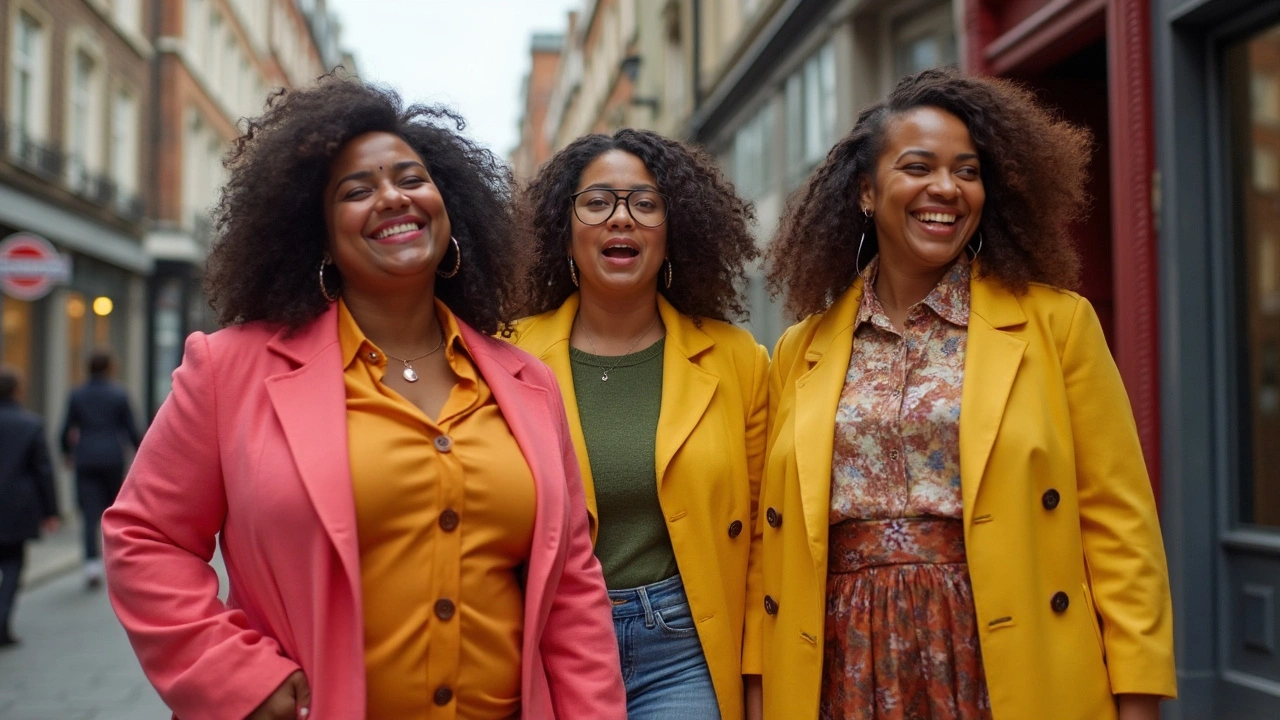
How Plus Size Models Are Changing the Industry
The old-school fashion industry used to act like bodies had just one shape: super slim. But now, plus size models are everywhere, and it’s flipping that idea on its head. Major brands—think Savage X Fenty, ASOS, and even Nike—don’t just feature one token curvy model anymore. They’re building whole campaigns around size-inclusive fashion, making it clear that style isn’t limited by size.
Big agencies like IMG Models and Ford now have entire divisions just for plus size talent. Back in 2015, only a handful of plus size faces popped up on big runways, but by 2023, the Fashion Spot reported that almost 6% of runway castings in major shows were curve or extended sizes. That’s not headline-grabbing, but it’s way better than nothing, and the trend is climbing every season.
Check this out—plus size model Ashley Graham made the cover of Sports Illustrated’s Swimsuit Issue in 2016. That wasn't just a "wow" moment. It was proof that curvier bodies sell magazines, break the internet, and attract new fans. After Ashley's cover, plus size models started popping up everywhere, from high-profile beauty ads to mainstream fast fashion shoots.
Social media has played a huge part, too. Instagram, TikTok, and YouTube have leveled the field. Anyone can build a following now, so the power isn’t all in the hands of gatekeepers. Brands notice when real people hype up body positivity and demand more model diversity. Some companies even use their own customers in national ads—which honestly, makes their stuff feel way more relatable than traditional campaigns ever did.
This isn’t just window dressing. It’s changing the way shoppers buy clothes. Plus size models mean more realistic sizing charts, better product images, and fewer returns because people can finally see what clothes look like on similar bodies. Here’s how it adds up for brands and customers:
- Brands with size-inclusive fashion campaigns often see an uptick in online engagement and loyalty.
- Studies show shoppers are more likely to buy when they see diverse models—especially those close to their own size.
- Real representation leads to better mental health outcomes and a stronger connection to brands.
Want to see the shift in numbers? Have a peek at this:
| Year | Runway Shows with Plus Size Models (%) | Brands with Size-Inclusive Campaigns |
|---|---|---|
| 2015 | 1.2% | Few (under 10 major names) |
| 2020 | 3.6% | Dozens (mainstream companies join in) |
| 2023 | 5.8% | Most top retailers, sportswear, and department stores |
The impact is real. This new era isn’t about a fad or checking a diversity box. It’s a shift in who gets to take up space—and what “fashionable” really means. If you’re tired of one-size-fits-all marketing, you’re not alone, and the industry is finally getting the message.
Getting Started as a Plus Size Model
Curious about jumping into the world of plus size models? It’s easier to start than most people think, but you do need to know the basics. Modeling agencies now scout for all body types, and many agencies offer special divisions just for plus size models—sometimes labeled as curve, full-figured, or size-inclusive. Most start with sizes 12 or 14 and up, but some agencies work with size 10 and above depending on the market.
Here’s the real deal: you don’t need a super professional portfolio right away, but clean, natural photos are a must. Take clear headshots, side profiles, and full body photos in good, natural light. Wear simple clothes—like well-fitting jeans and a plain t-shirt—so agencies can actually see you. Skip heavy makeup and filters. Agencies want to see the real you.
- Look up reputable agencies (Wilhelmina, Ford Models, and IMG all represent plus size models).
- Check agency websites—they usually have specific instructions for digital submissions. Follow them closely.
- Send only what’s requested: name, measurements (bust, waist, hips, height), age, and your photos. Don’t worry if you don’t have professional shots, just aim for clear, honest images.
- Be wary of scams. Real agencies never charge upfront for joining—they make money when you book jobs, not before.
Representation is way more diverse now, but some areas move faster than others. For example, a recent report by The Fashion Spot showed plus size and curve models made up nearly 21% of castings at New York Fashion Week in 2024, up from just 14% in 2019. That’s real progress, but there’s still plenty of growth ahead.
| Year | Plus Size Model Castings at NYFW |
|---|---|
| 2019 | 14% |
| 2022 | 19% |
| 2024 | 21% |
If you want to ramp up your chances, stay active on Instagram and TikTok with something that stands out. A lot of plus size models are scouted from social media nowadays—just look at Ashley Graham, who broke out on Instagram before landing mainstream deals.
Last thing: confidence goes a long way. Agencies and brands are looking for energy and personality. You don’t have to look like anyone else. Focus on your strengths, keep it genuine, and don’t let slow responses shake your confidence. The industry’s always hunting for fresh faces—yours could be the next one they want.
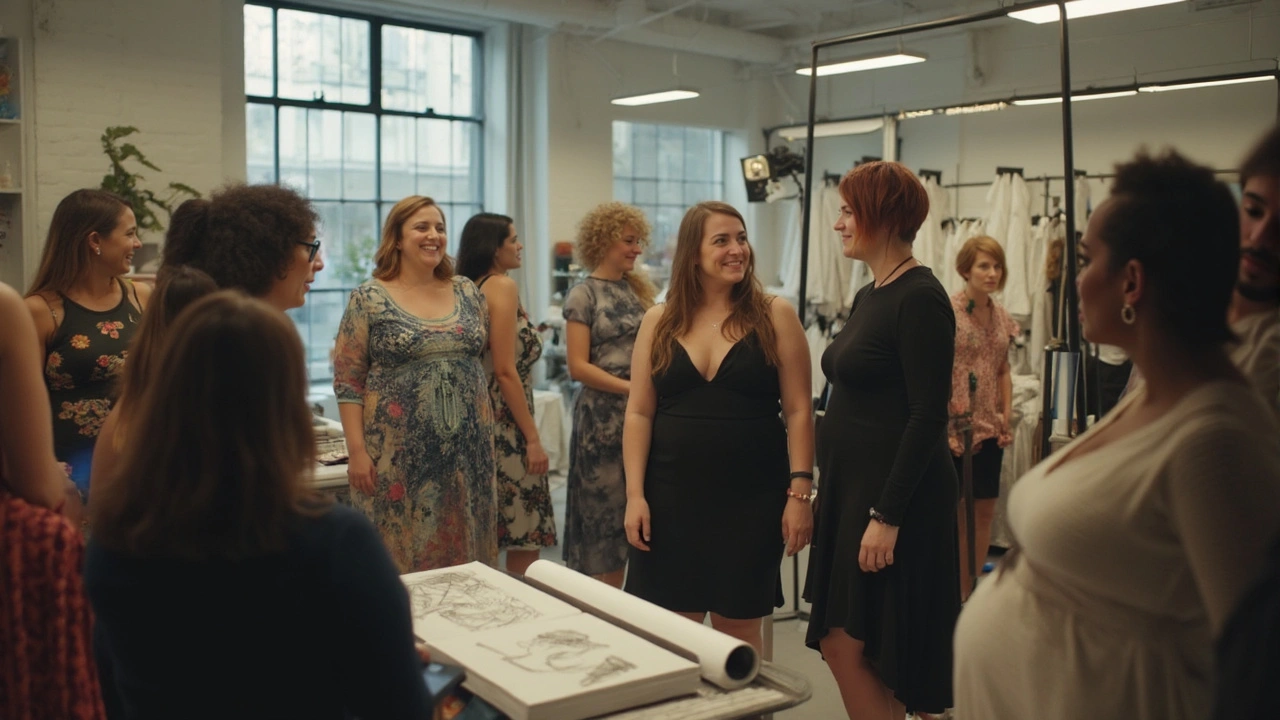
Common Questions About Plus Size Modeling
This is where most folks get stuck—the questions. If you’ve ever googled, “How do I become a plus size model?” or wondered if the standards are realistic, you’re in good company. So let’s dig into the things everyone’s curious about.
What size is considered 'plus size' in modeling?
Agencies usually consider anyone wearing US size 12 and up as plus size. Runway requirements can be even wider, stretching from size 10 to 22. The average American woman is now about a size 16-18, so plus sizing in modeling finally reflects what a lot of people look like.
Are there height requirements?
Height used to be a huge deal, but plus size models break a lot of rules. If you want to work high fashion or the runway, 5’9” and above is pretty standard, but for print, commercial, and social media gigs, agencies often book models who are 5’6” and up—or sometimes shorter if the vibe fits the brand. Bottom line: Don’t write yourself off just because you’re not tall enough for basketball.
Is there an age limit?
Not really. Brands want all ages, from teens to older adults. The call for diversity now covers all ages, backgrounds, and body shapes. If you’re over 40 and thinking about modeling for the first time, there’s room for you.
How much do plus size models get paid?
Rates vary a ton by job and experience. Established models sometimes earn thousands per shoot, while newcomers might start with $75–$200 per job. Social media is a game-changer too—you can earn through brand collabs simply by having an engaged following, even if you don’t sign with a traditional agency.
| Experience Level | Typical Rate per Shoot |
|---|---|
| Beginner | $75–$250 |
| Experienced | $500–$2,000 |
| Top-Tier/Agency | $2,500+ |
Do you need professional photos to get started?
No need to break the bank right away. Agencies often want clean, simple snapshots (called "digitals") in good lighting—front, side, and full body. You can take these on your phone! Once you land gigs, you’ll build a full portfolio.
How do you find legit agencies?
Look for agencies with real client lists and clear contract terms. Red flag: anyone asking for upfront fees to represent you. For plus size models, recognized agencies include IMG Models, Wilhelmina, and Ford Models. Also, some smaller agencies focus solely on body positivity and size-inclusive work. Always read reviews and, if possible, talk to current models before signing.
Do you have to lose weight or fit a “curvy but not too curvy” mold?
Not anymore. Sure, some brands have specific looks, but the point of this era is representation. The goal is more honest diversity, not a one-size-fits-all approach. Being healthy and confident are what gets you noticed now.
Can guys be plus size models too?
Absolutely. The demand for bigger male models has jumped, especially in sportswear and casual fashion. If you’re a guy with something to say and a unique look, there’s a space for you too. Brands want to see strong, relatable faces that connect with regular people.
Have another question that’s not on the list? You’re probably not the only one. Keep digging, join communities online, and reach out to agencies or plus size model mentors. The only real limit is how much you put yourself out there.
